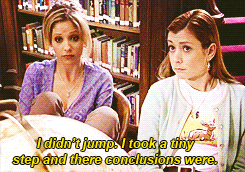By Pippa Wysong (June 26, 2015)
TORONTO – From robotic cow massagers to photon accelerators and big
physics, to a major vaccine development centre, Saskatoon is a hub of science,
discovery and outreach. This, of course,
was a delightful find for the nearly 100 members of the Canadian Science
Writers’ Association (CSWA) who attended the annual conference there. We couldn’t get enough of what the University of Saskatchewan had to offer.
The first stop on campus was the Rayner
Dairy Research and Teaching Facility, home to about 100 cows where research
is done looking at how feed combinations affect milk production, the use of
robotic technology, cow health, fertility and more. Between that and the
Ryan-Dube Equine Performance Centre, veterinary college students learn how to
work with big animals.
We saw cows, ready to be milked, wander into an automatic milking
stall. A cow walks in, had treats she could snack on, and stands there while milking
cups attach themselves to her udders – guided by a robotic vision system. When
done, the cow we watched languidly walked out.
Next to this was a robotic arm in the form of a large spinning brush
that could be activated by a cow to get a back-scratch or massage. And just as
our guide was describing how cows voluntarily walk over to the device and
activate it, one did. It was a bovine spa moment.
Devices like these are starting to appear in actual dairy farms
because, well, the cows like it, according to Dr. Bernard Laarveld who teaches animal and poultry science.
He noted that when outside, cows often rub their backs or sides against a fence
or tree. It feels good. Mimicking this indoors makes cows happy.
We also toured the Canadian Light
Source (CLS) where several physicists described their projects, ranging
from using the synchrotron for medical diagnostics, to soil analysis. The
ranges of light frequencies it uses means it is one of the most sensitive tools
in Canada for analysing the structure and chemistry of materials, including
soil, metals and biologic materials.
Impressively, the public can request tours for both the Rayner centre and
the CLS.
GMOS
Being in the agriculture research capital of Canada, the topic of GMOs
came up. A keynote talk was given by Mark
Lynas, a former anti-GMO food activist who was behind various campaigns
ripping GMO crops out of fields, in England. He now regrets the activism.
Why? The AAAS - The American Association for the Advancement of Science
released a consensus statement saying climate change was real and that the science overwhelmingly demonstrated it. He was
impressed with the science. But then the AAAS released a consensus statement
saying GMOs are safe, and generally good for farming and for feeding the
world's population. He couldn't support the one on climate change, and not the
one on GMOs since the quality of the science was excellent for both, he said. During
his activism days, he says he didn’t know the science.
The group got the chance to meet numerous
other scientists at the conference in areas ranging from Arctic water quality,
soil science, a researcher comparing heritage vs modern wheat, global food
security, vaccine development, and more. And there was a public talk by Jay
Ingram about Alzheimer’s Disease (he also gave a talk on effective and creative
story-telling methods).
PROFESSIONAL
DEVELOPMENT
What about the art of science
communication? Speakers from Mashable, Greymadder.net and the CBC gave inspiring talks about new ways of
presenting stories and the changing market place. Personal stories still matter
when it comes to what people want to read, said Alix Hayden who launched
Greymadder. Professional development sessions were useful for beginner and
seasoned science writers alike.
There was fun too, such as the boat tour on
the Saskatchewn River on a perfect day. We mingled with researchers working on
how to deal with the effects of climate change (such as drought) and managing this
valuable river source – the water of which is needed for most of Canada’s
crops. These world-class researchers are also working as consultants in China
and advising how to reduce emissions and water pollution there – much of which
eventually flows to Canadian waters.
With a population of only 250,000, the city
of Saskatoon sure packs in a lot of world-class science.
-30-



 And that's just me and my female friends. Studies show that graduating classes in university engineering programs are now 20% women. But only 9.7% of working engineers are female. When asked why they left their field, many women cite the attitudes of their male coworkers.
And that's just me and my female friends. Studies show that graduating classes in university engineering programs are now 20% women. But only 9.7% of working engineers are female. When asked why they left their field, many women cite the attitudes of their male coworkers.

